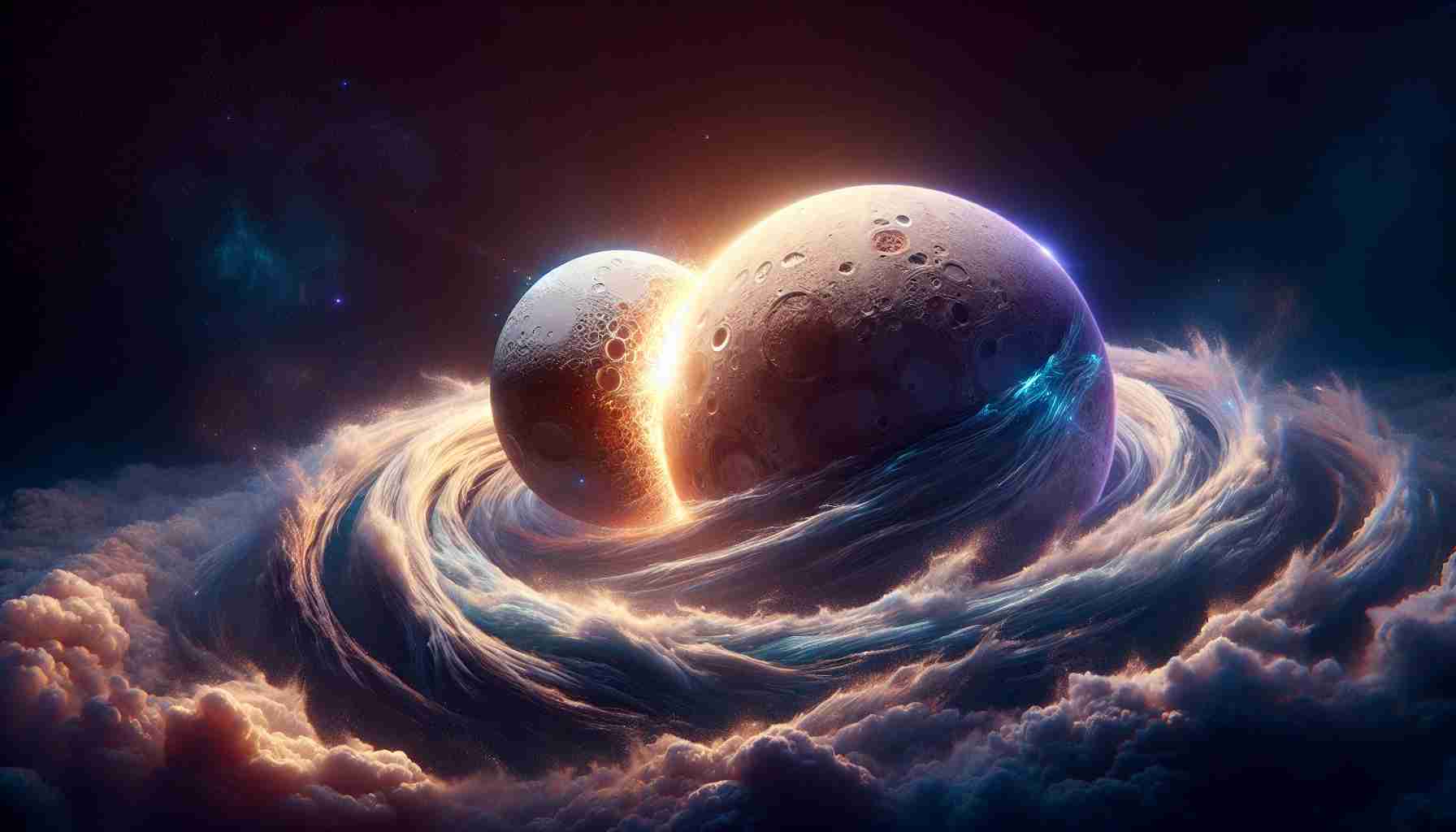The Fascinating Formation of Pluto and Charon
Ancient cosmic events, billions of years ago, reshaped our understanding of the solar system. In the frigid reaches of space, two celestial entities came together in a surprising manner rather than disintegrating. This interaction, termed a “kiss and capture,” gave birth to the binary system of Pluto and its moon, Charon.
Research led by a NASA postdoctoral fellow at the University of Arizona has brought forth groundbreaking insights into this formation. The study examines the impact of structural components of small, icy celestial bodies, revealing how rigidity in rock and ice plays a crucial role in planetary collisions. Traditional models like those explaining Earth’s moon formation rely on molten material behavior, which does not apply to colder and smaller bodies like Pluto and Charon.
Using state-of-the-art simulations, the researchers demonstrated that during their initial encounter, rather than merging or melting, Pluto and Charon briefly adhered to one another, then separated and stabilized in their current orbital positions. This process allowed for the preservation of their original composition and contributed to a unique heating mechanism, which might have led to Pluto’s subsurface ocean.
This fresh perspective not only enlightens Pluto and Charon’s past but also opens doors to understanding similar phenomena in distant celestial systems, reshaping theories on planetary formation throughout the universe. The implications of this study extend far beyond these two bodies, inviting new questions about the very nature of our solar system.
Revealing the Secrets of Pluto and Charon: A Cosmic Dance
The Fascinating Formation of Pluto and Charon
The formation of the binary system of Pluto and its moon Charon offers a compelling example of celestial dynamics in our solar system. Recent studies have uncovered significant new insights into how these distant icy bodies came together—challenging traditional models of planetary formation and influencing our understanding of similar systems across the universe.
Key Insights into the Formation Process
A groundbreaking study led by a NASA postdoctoral fellow associated with the University of Arizona has provided a fresh perspective on the “kiss and capture” process that resulted in the formation of Pluto and Charon. Unlike the conventional models that detail how larger bodies like Earth and its moon formed from molten material, this research highlights the role of structural rigidity in smaller, icy celestial bodies.
Utilizing advanced computer simulations, researchers discovered that during their initial encounter, Pluto and Charon had a unique interaction. Instead of merging or melting, they briefly adhered to each other before separating, leading to their current stable orbits. This physical interaction not only preserves their distinct compositions but also suggests potential mechanisms behind Pluto’s subsurface ocean.
Implications for Planetary Science
The findings demand a re-evaluation of existing theories concerning celestial formation. Here are some implications and advancements based on the study:
– Broader Application of the Study: The mechanisms observed in Pluto and Charon’s formation can be applicable to understanding the dynamics of other small solar system bodies and even exoplanets.
– Potential for Subsurface Oceans: The study posits that interactions like those between Pluto and Charon could lead to heating processes that create subsurface oceans in icy worlds, enhancing prospects for astrobiology in other celestial habitats.
– New Models of Planetary Formation: Traditional models of planetary formation often overlook the complexities associated with icy bodies, necessitating new frameworks that integrate both solid and frozen materials into their developmental narratives.
Pros and Cons of Current Models
| Pros | Cons |
|—————————————-|——————————————-|
| Enhanced understanding of binary systems | Limited applicability to larger bodies |
| Opens avenues for extraterrestrial exploration | May oversimplify complex interactions |
| Encourages interdisciplinary research | Requires refinement of current simulations |
Future Trends in Cosmic Research
As we delve deeper into the complexities of celestial mechanics, new technologies and methodologies will likely enhance our understanding of planetary formation. The discoveries related to Pluto and Charon could steer the research community towards more nuanced theories incorporating a broader range of celestial phenomena, influencing future explorations of the outer solar system and beyond.
Conclusion
The exploration of Pluto and Charon’s formation not only enriches our knowledge of these intriguing bodies but also serves as a catalyst for expanding theories about the emergence and evolution of celestial systems. As researchers continue to probe the mysteries of the cosmos, we can anticipate new revelations that will further illuminate our place in the universe.
For more insightful explorations into space and planetary science, visit NASA.
